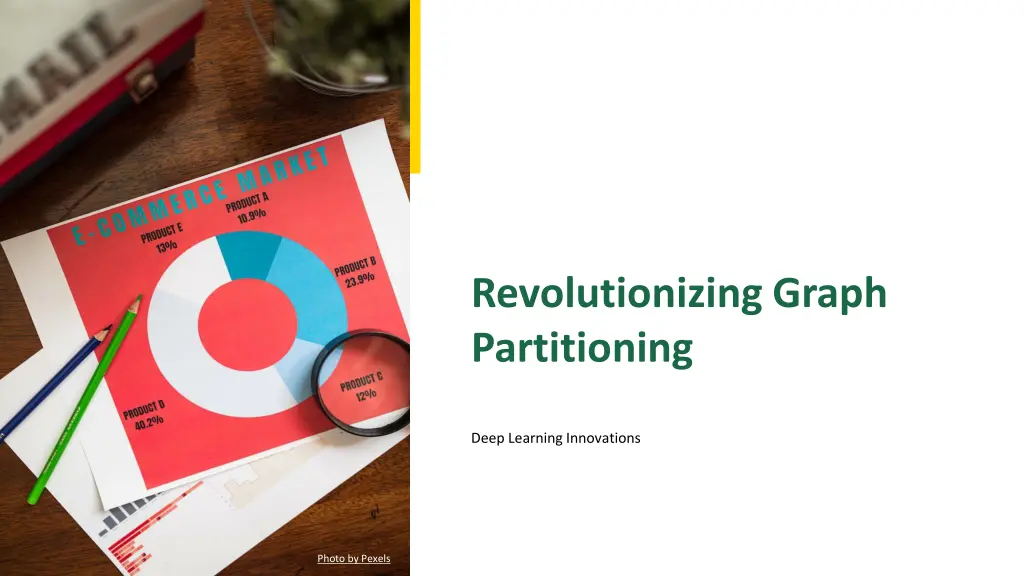
Revolutionizing Graph Partitioning with GAP Framework Innovations
"Explore the revolutionary GAP Framework for graph partitioning, leveraging deep learning to optimize performance across various domains. Learn about the core problem, benefits of deep learning, applicability, performance evaluation, and real-world impact."
Download Presentation

Please find below an Image/Link to download the presentation.
The content on the website is provided AS IS for your information and personal use only. It may not be sold, licensed, or shared on other websites without obtaining consent from the author. If you encounter any issues during the download, it is possible that the publisher has removed the file from their server.
You are allowed to download the files provided on this website for personal or commercial use, subject to the condition that they are used lawfully. All files are the property of their respective owners.
The content on the website is provided AS IS for your information and personal use only. It may not be sold, licensed, or shared on other websites without obtaining consent from the author.
E N D
Presentation Transcript
Revolutionizing Graph Partitioning Deep Learning Innovations Photo by Pexels
01 Understanding Graph Partitioning Table of Contents 02 Introducing GAP Framework 03 Benefits of Deep Learning 04 Applicability Across Domains 05 Performance Evaluation 06 Challenges in Graph Partitioning 07 Comparison with Traditional Methods 08 Real-World Impact 09 Future Prospects 10 Conclusion 11 Thank You!
1 Understanding Graph Partitioning The Core Problem Graph partitioning involves dividing graph nodes into balanced groups while minimizing edge cuts between them. This task is essential across various fields such as computer vision, VLSI design, and biology. It's considered an NP-complete problem, often requiring approximate solutions due to its complexity. A deep understanding of graph mechanics boosts efficiency in processing and resource allocation. Photo by Pexels
2 Introducing GAP Framework A New Approach We present GAP, a Generalizable Approximate Partitioning framework leveraging deep learning techniques. GAP utilizes a differentiable loss function to represent partitioning objectives effectively. Unlike traditional methods, GAP generalizes across different graph structures and optimizations. This framework empowers robust performance during inference, even with unseen graphs. Photo by Pexels
3 Benefits of Deep Learning Why GAP Excels GAP learns to optimize graph representation while addressing the partitioning loss simultaneously. This dual learning approach provides flexibility for various graph structures, proving its versatility. The model's capability to adapt ensures minimal re- optimization,saving time and computing resources. This innovation marks a significant shift in how we approach graph partitioning tasks. Photo by Pexels
4 Applicability Across Domains Wide Reach GAP is applicable in diverse domains such as transportation networks and social networks. In device placement, it ensures efficient distribution across devices like CPUs and GPUs. By minimizing edge cuts, it enhances communication and reduces latency between partitions. Its versatility fosters advancements in multiple industries leveraging graph-based data. Photo by Pexels
5 Performance Evaluation GAP in Action GAP was rigorously tested across graphs of varying sizes and structures, including popularML models. Evaluations included ResNet, VGG, and Inception-V3 to illustrate adaptability and performance. Results demonstrated GAP's capability in producing efficient partitions across differenttasks. This validation underscores its importance in real-world applications and theoretical research. Photo by Pexels
6 Challenges in Graph Partitioning Complexities Graph partitioning faces challenges due to its combinatorial nature and NP-completeness. Traditional solutions often rely on heuristics or approximation algorithms, limiting efficiency. Complex graph structures can lead to suboptimal partitions if not handled correctly. Understanding these challenges helps pinpoint GAP's strengths and innovative solutions. Photo by Pexels
7 Comparison with Traditional Methods GAP vs Baselines GAP outperforms conventional methods by eliminating the need for repeatedoptimizations. Traditional approaches struggle with diverse graphs, while GAP's generalizationenhances adaptability. This provides a significant advantage in scenarios requiring quick and efficient partitioning. GAP thus emerges as a frontrunner in graph partitioning solutions with its unique approach. Photo by Pexels
8 Real-World Impact Innovating Industries The adoption of GAP can transform industries reliant on graph architecture, enhancing efficiency. By optimizing resource allocation, it paves the way for improved system performance. Industries from tech to healthcare can benefit significantly from advanced graph processing techniques. This innovation encourages broader acceptance of graph- based solutions within numerous sectors. Photo by Pexels
9 Future Prospects What's Next? The scalability of GAP opens avenues for future research in deep learning and optimization. Pioneering advancements may lead to new methodologies enhancing graph theory applications. Continued exploration may refine techniques, enabling real- time applications and larger datasets. The future holds great promise for further innovations in graph partitioning technology. Photo by Pexels
10 Conclusion Embracing the Change GAP represents a significant leap in graph partitioning through deep learning strategies. Its unique approach addresses challenges faced by traditional methods, showcasing potential across fields. We encourage the community to adopt and explore the capabilities of the GAP framework. Together, we can revolutionize the understanding and application of graph partitioning. Photo by Pexels
11 Thank You! Your Questions? Thank you for your attention during this presentation on the GAP framework for graph partitioning. We hope you are inspired to explore this innovative approach further. Feel free to ask any questions or seek clarifications on the topics discussed. Let's engage and push the boundaries of graph partitioning together! Photo by Pexels
